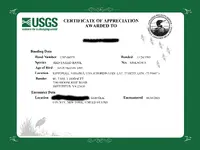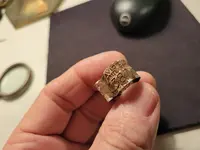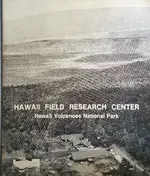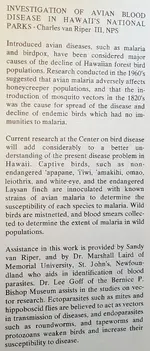Between 12/1979 to 4/1980, I worked as an 18 year old field research assistant, mist netting and banding Hawaiian endemic and indigenous bird life in the mist forests of Hawaii Volcanoes National Park on the southern slopes of Mauna Loa. The research was sponsored by the U of Hawaii, US Dept. of Interior, National Park Service, and US Fish & Wildlife Service and sought to understand the range, numbers, and health of remaining endangered Hawaiian honey creepers. I mist netted 100's of birds and banded, plus took a small snip off a center claw to get a drop of blood which was immediately made into a smear then later examined for the presence of avian malaria and other diseases. When not in the field banding and making other observations, I was in the lab scanning blood slides on the microscope at 900x. We not only placed a small aluminum band, we also sometimes use a combination of up to three color bands on the other leg to keep track of individuals. We repeatedly saw banded birds thriving after this experience, so no harm was done.
So I am sensitive to this type of research and know the importance here of monitoring conditions along the Atlantic flyway. I love finding these bands and come across them as hunters sometimes lose track of winged birds.
In the case of Hawaii, they had something like 76 species of known bird life found nowhere else in the world at the time Capt. Cook discovered the islands. At some point shortly after that. ships coming up from Mexico exchanged their water, introducing the mosquito to the Hawaiian Islands. Yes, it was a true paradise! These mosquitoes became a vector allowing the transmission of avian diseases between Hawaiian and birds stopping there on the migration between Siberia and South America. There were less than ten native species remaining when I worked there. Also due to a combination of deforestation and the introduction of non-native birds.
One of my highlights was to capture a breeding pair of the high;y endangered Palila, a honey creeper on the high slopes of Mauna Kea with remaining numbers below 500. I caught the male, a colleague the female. They were part of captive breeding to bring the wild numbers back up. The photo is a publication for the research center I worked from and a synopsis.







